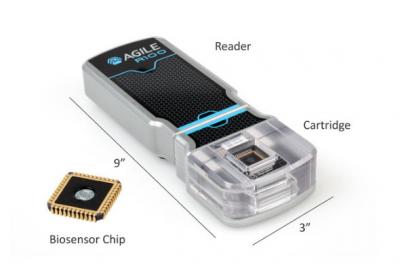Novel graphene nano-calligraphy method holds potential for improved sensors
Scientists at The University of Manchester in the UK and Karlsruhe Institute of Technology (KIT) in Germany have designed a method to chemically modify small regions of graphene with high precision, leading to extreme miniaturization of chemical and biological sensors which can be used in blood tests, minimizing the amount of blood a patient is required to give.

The team has shown that it is possible to combine graphene with chemical and biological molecules and form patterns. Using technology that resembles writing with a fountain pen, the scientists were able to deliver chemical droplets to the surface of graphene in very small volumes. In order to achieve extremely fine chemical patterns, the researchers used droplets of chemicals less than 100 attolitres (10-16 L) in volume - that’s 1/10,000,000,000,000,000th of a liter!


